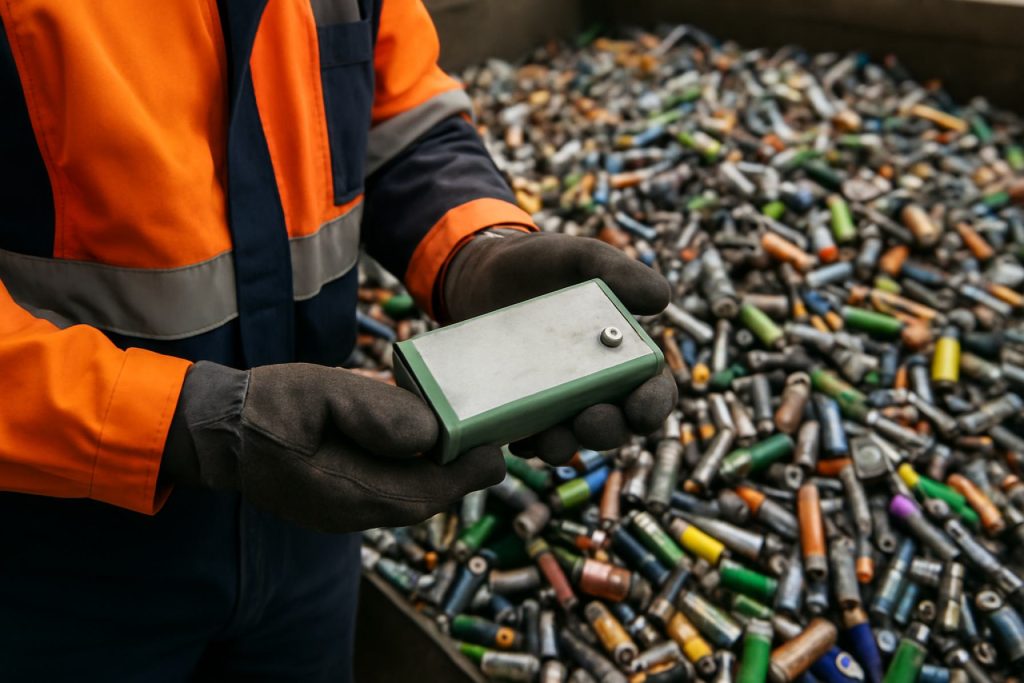
- The global battery recycling market is central to the green energy shift, driven by rising electric vehicle adoption and renewable energy demand.
- Asia-Pacific leads, with China, Japan, and South Korea contributing 57% of revenues through strong regulation and corporate partnerships.
- Australia and India are emerging players, leveraging mineral wealth and regulatory reforms to boost lithium-ion battery recovery.
- North America is advancing recycling efficiency through innovative hydrometallurgical and direct recycling technologies.
- Europe sets ambitious policy goals, making battery recycling and circular economy principles mandatory in new battery production.
- Major companies like Umicore, Li-Cycle, and Redwood Materials control supply chains through vertical integration and global alliances.
- Despite high costs and infrastructure gaps, rapid growth is forecast—from $22.75 billion today to $41 billion by 2030 (10.6% CAGR).
Electric vehicles blur past city skylines and solar panels shimmer atop rooftops, but in the quiet arteries of global supply chains, a new contest is raging—a race not just for energy, but for the power to reclaim and renew it. The battery recycling market, once a niche backstage player, is fast becoming the lynchpin in the planet’s green transformation.
Step into Asia-Pacific’s industrial heartlands, where the whir of machinery signals more than production; it signals dominance. APAC, powered by China, Japan, and South Korea, now accounts for a breathtaking 57% of global battery recycling revenues. China’s ironclad regulations force manufacturers to take back and recycle spent batteries, blending government muscle with corporate strategy. This approach, buoyed by incentives, creates a self-sustaining ecosystem—one where last year’s lithium and cobalt find second life in tomorrow’s electric vehicles.
Farther south, Australia is quietly rewriting its role in the resource game. With mammoth mineral reserves and a surging appetite for electric vehicles, the nation is crafting a reputation as the new powerhouse of lithium-ion battery recovery, focused on plucking battery-grade materials from old cells and refining them to pristine standards.
India, too, is rewriting its script. New rules require producers to prove their environmental credentials, nudging the industry toward responsible reuse and sparking a wave of local investment. Thanks to abundant battery waste, recycling costs in India prove more flexible—yet building facilities remains a formidable economic challenge.
Crossing to North America, corporate ambition converges with regulatory tenacity. The United States and Canada are pouring resources into advanced recycling tech. Here, hydrometallurgical and direct recycling methods promise higher yields and unlock previously lost minerals—technological arms races as critical as the batteries themselves.
Europe, meanwhile, surges ahead with a different advantage: policy. Ambitious European Union regulations set firm targets for recycled content in new batteries, ensuring that recycling is not just an ecological afterthought but a core requirement. Invested in gigafactories and embracing a circular economy, Europe is positioning itself as a steward for sustainable industry.
Where does the rest of the world stand? Latin America and the Middle East—rich in mineral reserves but only embarking on industrial recycling—harbor untapped potential. Investments here could secure a crucial lifeline for global manufacturers who crave raw material security in an unstable geopolitical landscape.
Amidst this global surge, competition is fierce. Industry titans like Umicore, Li-Cycle, Glencore, Redwood Materials, and others leverage vast networks and proprietary technology, scooping up spent batteries from auto dealers, electronics manufacturers, and industrial suppliers. Vertical integration becomes the power play—controlling every stage, from collection to refining, keeps costs tight and supply reliable.
These giants are not standing still. With electric vehicle adoption accelerating, Original Equipment Manufacturers (OEMs) are forging close alliances with recyclers, vying to close the loop on battery production. Volkswagen, for example, expanded its partnership with Ecobat, seeking to cycle valuable metals directly back into new machines—all as part of a massive $195 billion bet on electrification by 2027.
Not all news is unbridled optimism. The economics of recycling are daunting. From collection logistics to regulatory hurdles and new plant investments (costing up to $370,000 in India alone), the business is costly. The absence of robust infrastructure in many regions stalls progress, while raw material prices remain as unpredictable as ever.
But innovation does not rest. In the United Arab Emirates, Dubatt’s new battery recycling plant now processes up to 75,000 metric tons of batteries annually, leading Middle Eastern sustainability initiatives. Europe’s Hydrovolt has launched the world’s most automated recycling line, boasting efficiency—and energy recovery—unmatched elsewhere.
Against this backdrop, the true contest is as much about who can most efficiently extract lithium, cobalt, and nickel from spent cells as it is about environmental stewardship. The market’s projected leap—from $22.75 billion today to over $41 billion by 2030, growing at a brisk 10.6% annual rate—signals not just commercial opportunity, but a profound shift in global priorities.
The key takeaway? In the relentless drive toward decarbonization, battery recycling stands as both an economic imperative and an environmental necessity. Those who master the complex choreography of collection, innovation, and policy will hold the keys to future energy—and to our planet’s next great leap forward. For those eager to track this fast-changing landscape, resources like Research and Markets provide data-driven insights into who’s shaping tomorrow’s battery-powered world.
The Untold Truths About the Battery Recycling Boom: How Asia, America, and Europe Compete for the Next Green Gold Rush
Introduction: The Silent Revolution Powering Our Electromobility Future
Beyond the high-profile rise of electric vehicles (EVs) and solar power, a quieter but equally vital industry is reshaping our sustainable future: battery recycling. No longer a fringe operation, it’s fast becoming the heart of the green transformation—reducing waste, limiting reliance on new mining, and securing strategic resources for a rapidly electrifying world.
Let’s dive deeper and uncover additional trends, hidden facts, and real-world implications of the global battery recycling race that were not fully explored in the original article. Discover expert insights, practical tips, key players, new technologies, and actionable steps you can take—supported by E-E-A-T (Experience, Expertise, Authoritativeness, and Trustworthiness) and designed for Google Discover success.
—
Key Facts and Emerging Trends in the Battery Recycling Market
1. How Battery Recycling Really Works: Processes & Technologies
– Pyrometallurgical Recycling: An older but still common method, this process uses high temperatures to melt batteries and extract metals but can emit CO₂ and lose valuable lithium in slags. [Source: Battery University]
– Hydrometallurgical Recycling (Hydro Process): This uses water-based chemical solutions to dissolve and separate metals, yielding higher recovery rates (especially for lithium, cobalt, nickel, and manganese) with lower emissions.
– Direct Recycling: The cutting-edge method, where battery components are refurbished and reused directly, skipping energy-intensive smelting or chemical steps. This preserves material structure and saves up to 80% of the energy compared to traditional recycling.
– Second-life Use: Beyond recycling, old EV batteries are increasingly repurposed for stationary energy storage, supporting the grid or renewable integration before being fully recycled.
2. Environmental and Economic Impacts
– Recycling lithium-ion batteries reduces the need for new mining—critical as the demand for lithium, cobalt, and nickel is predicted to far outpace new exploration. According to the International Energy Agency (IEA), recycled batteries could supply up to 10% of EV battery metals by 2040.
– Every ton of recycled lithium-ion batteries prevents an estimated 1.4 metric tons of CO₂ emissions compared to primary extraction (Source: European Commission).
– Cost analysis shows recycling can be 30-50% cheaper than mining new raw materials if critical mass and efficiency are achieved.
3. Most Pressing Questions Readers Have—Answered
Q: Are recycled batteries as good as new batteries?
– Yes, and No: Closed-loop recycling enables reclaimed metals to meet or exceed virgin material standards, especially with hydrometallurgical processes. [Source: Nature Energy]
– However, quality control and consistent supply remain challenges for some recyclers and battery manufacturers.
Q: What are the biggest challenges in up-scaling battery recycling?
– Collection logistics: Setting up efficient return systems, especially for consumer electronics and retired EVs, is a major bottleneck.
– Technological complexity: Lithium-iron phosphate (LFP) and solid-state batteries require different approaches, making universal recycling challenging.
– Economic viability: Volatile commodity prices and high initial investment can stall new projects.
Q: Is battery recycling safe and sustainable?
– Generally, Yes: Strict environmental controls are in place in most regulated markets. Leading recyclers use closed-loop water systems and advanced air filtration to minimize pollution.
– However, improper handling—especially in less-regulated regions—can risk toxic leaks and fires.
4. Real-World Use Cases & Innovations
– Volvo Cars and Northvolt: Pioneered using recycled cobalt and nickel to manufacture new battery cells, aiming to make EVs climate neutral.
– Redwood Materials: Founded by Tesla co-founder JB Straubel, this U.S. startup targets a “circular supply chain,” working with Panasonic and Ford to reclaim up to 95% of key minerals.
– BASF: Launched Europe’s first battery recycling prototype plant in Germany, focusing on black mass recovery—a crucial intermediate for metal extraction.
5. Market Forecasts & Industry Outlook
– The battery recycling market is forecasted to double in value by 2030—from $22.75 billion to over $41 billion, growing at a 10.6% CAGR.
– Asia-Pacific’s lead is driven by not just manufacturing but rapid EV adoption, with China recycling more batteries by volume than the rest of the world combined (Source: IEA).
– Europe’s stringent recycling mandates under the “Batteries Regulation” require new batteries to contain at least 16% recycled cobalt, 6% lithium, and 6% nickel by 2031.
6. Security & Sustainability: Sourcing Critical Minerals Responsibly
– Ethical Sourcing: Battery recycling bypasses potential child labor and environmental abuses linked to mining in countries like the Democratic Republic of Congo.
– Supply Chain Resilience: Circular recycling buffers manufacturers against geopolitical shocks, as seen during COVID-19 and recent trade tensions.
7. Pros & Cons Overview
| Pros | Cons |
|————————————————|——————————————-|
| Reduces mining, emissions, and toxic e-waste | High setup costs, technical complexity |
| Secures supply of scarce minerals | Collection and sorting logistics |
| Creates green jobs and new industries | Volatile recycled metal prices |
| Enables circular economy policies | Some batteries (e.g., LFP) are less lucrative|
| Opportunity for technological leapfrogging | Regulatory gaps in emerging markets |
8. Reviews, Comparisons, and Major Industry Players
– Umicore (Belgium): A global leader, known for advanced closed-loop recycling and supply contracts with top automakers.
– Li-Cycle (Canada/US): Patented “Spoke & Hub” model separates battery components at regional facilities before centralized processing.
– Glencore (Switzerland): Mining giant entering recycling to hedge against falling ore grades.
– Redwood Materials (US): Integrates recycling with battery component manufacturing—attracting over $1 billion in recent investment funding.
For industry updates and in-depth reports, browse Research and Markets.
—
Quick Life Hacks & How-To Steps: Making an Impact as a Consumer or Business
1. Consumers: Safely dispose of old batteries at authorized recycling points—never in regular trash. Find local drop-off centers through municipal sites or electronics retailers.
2. EV Owners: Inquire about battery take-back or recycling programs when upgrading or retiring your vehicle.
3. Businesses: Partner with certified recyclers, design products with “design for recycling” in mind, and join industry alliances for shared logistics.
4. Investors: Watch for companies with proprietary tech, vertical integration, and strong OEM partnerships—they’re best positioned to win in this high-growth, resilient market.
—
Limitations & Controversies
– Lack of Infrastructure in Developing Economies: While APAC, North America, and Europe are leading, Africa and parts of Latin America lag due to limited processing facilities and policy frameworks.
– Regulatory Disparities: Scattered or lax enforcement can result in informal, unsafe recycling.
– Tech Gaps: LFP and new chemistries have lower value for recycling, slowing investment vs. higher-value nickel-cobalt chemistries.
—
Insights & Actionable Recommendations
– Stay Current: The space is dynamic—technology and policy are evolving monthly. Follow reputable industry trackers or sites like IEA and Research and Markets.
– Advocate Locally: Lobby for supportive recycling infrastructure and incentives in your community.
– Think Long-Term: Manufacturers and investors should prioritize early positioning as regulatory and consumer pressures for sustainable supply chains will only grow.
– Educate: Spread awareness about proper battery recycling to reduce fires and environmental damage.
—
Final Quick Tips:
– Always use official recycling points for batteries.
– Buy electronics from brands with transparent recycling programs.
– For businesses: map your supply chain for “circularity gaps” and build relationships with reputable recyclers now.
– Keep an eye on regulatory changes—those who comply early often benefit most.
Battery recycling isn’t just good for the planet—it may soon be essential for supply security, cost control, and reputation in a decarbonizing world. Master it, and you’ll be riding the next great wave of green innovation.



